Move a beehive 3 feet or 3 miles
There is an old saying many people have heard, you can only move a beehive “3 feet or 3 miles”. This saying implies that you can move a beehive up to 3 feet from it's original location and the bees will still find their hive but if the distance exceeds 3 miles or more, the bees figure they are not in Kansas anymore and they reorientate. ie... when the bees wake up to a new location, the landscape looks very different and their GPS is a bit off.
Some folks setup their hive in their yard and for whatever reason they want or need to move the hive to a different location. Moving the hive will disrupt the colony for the first day or so. After many years of helping folks move their hives, these are some of the ways we have found work.
We commonly move hives 2 miles... so much for the 3 mile saying ! , but if you are needing to move a hive more then 5 or 6 feet feet you want to help them reorientate to the new location. So lets understand how the bees orientate and then get back to that old saying.
How Bees Orientate
Bees can forage up to a radius of 3-5 miles to gather nectar, pollen, water and propolis then they make their way back home. Making it back home must be the hard part, so the bees take extra special care when leaving the hive to know how to get back. When bees orientate they come out of the hive and turn looking back at the hive entrance, as if to confirm this is what my home looks like. They fly in small figure eights in the front of the hive gathering information about landmarks and the suns' direction. These orientation patterns grow wider and more far-reaching, then as if they have all the information they need, they zip off across the landscape.
Bees Communicate Foraging Locations
Bees receive information about the location of nectar sources from other successful foragers returning from the field. These successful foragers recruit other foragers by releasing pheromones into the hive and often giving other bees a taste of the nectar they scored. Once the successful foragers have gotten several eager bees attention, they begin what was thought to be a “waggle dance”, well it turns out not to be quite a dance performance, but a vibratory wiggle. According to research done by Jurgen Tautz in his book, “The Buzz About Bees”, the bees are actually grabbing onto the edges of the comb cell and rapidly flexing the rims of the cells and sending these vibrations over the surface of the comb several inches away. This vibration alerts others in the dark that a successful bee forager has a good place to find flowers. Interested bees gather in a circle around the“dancing” bee. The interested bees reach their antennas toward the waggling bee to receive information about the direction of the nectar source though their antennas being vibrated at certain frequencies. The distance from the nectar source and its orientation or angle to the sun is communicated during this dance. The forager bee will also turn in different directions while vibrating the comb giving the bees more information.
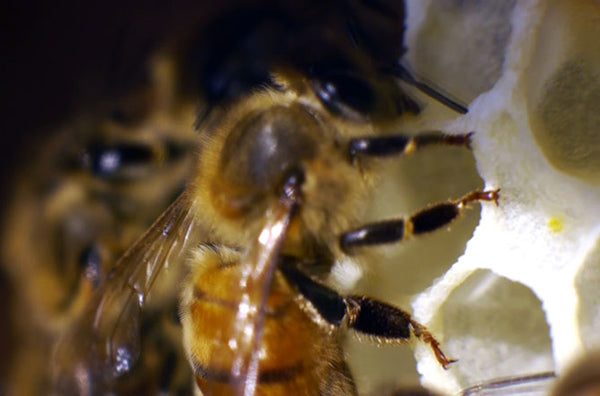
A honey bee holding onto the edge of the comb cell
Bees use landmarks to orientate themselves
When bees are out foraging they use landmarks to orientate themselves back to their hive. They use polarized light to determine their relative speed to the landscape passing beneath them. Bees also have an internal honing device which works like a GPS to orientate themselves by magnetic variations around them. Once set in their memory, they don't need to reorientate each time they leave the hive, they know how to get back home, or at least they do until you move their hive, and this is where the problem starts. Trees don't usually just walk off with a colony of bees inside, or at least trees didn't walk around for several million years. So the bees don't really have a built-in, “find my roving hive” or “where's waldo” behavior, but they do have a behavior for “ the tree my hive was in just got blown over in the wind” alerts. So we can work with this alert system and use it to trigger the bees to reorientate.
Why Bees Reorientate
Some instances cause bees to reorientate and this is what we are trying to trigger in the bees when we move their hive to a new location. If the bees have been confined in the hive for more than about 72 hours they normally reorientate. Not being able to get out of their hive alarms them that something “unnatural” has happened, like “what the...heck was that about ? “Did our tree fall ?”, “What blocked up our entrance ?” Back in the old days of hives being in the good old stable cottonwood trees, a closed entrance could only mean one thing, fallen branch covering our entrance, we better reorientate. This is where we can play a little trick on the bees to get them to reorientate.
Helping the Bees Reorientate
When moving a hive a short distance, put sticks and branches at the front of the hive to give them a reason to reorientate. If you don't use something at the entrance of their hive to trigger them into reorientating, the bees will fly out of the hive to go foraging and return to the original hive location, not knowing their hive had been moved. The bees will begin hovering at the original hive location. Then they will start looking for their “lost” hive by flying in ever increasing figure eights, using their sense of smell to find out where their hive is. And if you have other hives nearby they may end up trying to go into the closest hive. You can loose a lot of bees this way so it is a safer bet to trigger their reorienting pattern once they leave the new hive location.
 Branches in front of a row of top bar bee hives that were relocated across the yard. The branches help the bees reorientate.
Branches in front of a row of top bar bee hives that were relocated across the yard. The branches help the bees reorientate.
Altering the hive entrance with branches may not trigger all of the bees in the colony to reorientate and they will cluster at the old location. If this is the case put an empty nuc or swarm box at the old location and wait until night, then close up this nuc box and move the bees to the hive at the new location.
Inching the Hive Across the Yard
There are other ways to get your hive across the yard. Many people are successful moving the hive a foot at night, slowly creeping the hive across the yard. Imagine what the neighbor will experience, ... “is that hive moving across his yard”?
Relocating Hive to a Friends' Place Temporarily
Another solution is to move the hive over 2-3 miles away to a friends' house and after a week or so move the hive back to the new location in your yard. The bees will reorientate when you bring them back into your yard, as it is different than the location 3 miles away they were just at for a few weeks.
Materials needed for moving a hive
-Screen or mesh
-Duct tape
-Cushioning for the car ride
-Spray bottle with water
-Carpenters level
-Shims
Moving the Bee Hive
Whether you are moving the beehive a few feet or a few miles you want to close up the entrance when all of the bees have returned for the night. In the summer you will often have to wait until night, since the bees are out foraging often past sunset. In the fall or winter all the bees are usually back in the hive once the temperature is too cool to fly, which is about 45-50 degrees.
The bees need ventilation during the move. Screen or mesh duct taped over the entrance allows the bees to still circulate air in the hive during the move. Having ventilation is especially important during the summer, when it can still be very warm at night. Be sure to check the back of the hive, some colonies have an opening by the falseback and this would be a surprise to find out while driving the bees off to their new location. The bees will find any open hole to get out of the hive. If there are top bars that don't have comb on them and are loose, you may want to put a strip of duct tape along all of the top bars to keep them from moving during the ride.
The Car Ride with a Hive Full of Bees
If you are moving the hive 2-3 miles away and putting it into your car or truck use some padding to cushion the bumps. A few bumps can shake up the hive significantly. The bees are resilient but the less disruption the better. During the summer you will also need to spray the entrance with some water. A full of hive bees can overheat very quickly and you may have bees pressing on the screen to get out. For the ride either crank up the air conditioning or roll down the windows so the bees have air flow and ventilation.
What Time of Day Do I Move the Hive?
Move the hive either at night or first thing in morning before the bees would be out foraging. In the summer time this can be 6am or earlier! It is stressful for the bees to be confined in the hive and they can very quickly overheat.
Have the New Location Setup for a Bee Hive
Have the hive stand or cinder blocks leveled as best you can before the bees arrive. Once you place the hive, re-level it before taking off the screen. You may want to bring some shims to use to level the hive. Remember a full top bar hive of bees and honey can be quite heavy so having someone to help is necessary.
Be aware of fragile, newly drawn out comb
If it is a new hive and the bees have not drawn out much comb remember this new virgin comb is very fragile as the bees have not propolised the comb cells or used propolis to attach the comb to the sides of the hive. And the warmer it is outside the more fragile new comb will be. You may want to wait until the bees have built up some significant comb to move the hive.
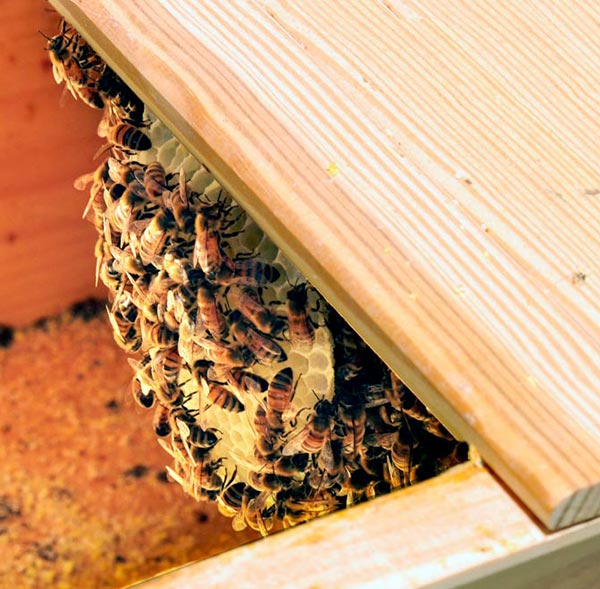
Newly drawn out comb is called virgin comb as it is delicate until the bee use propolis to add strength to it coating the comb cells and attaching the comb to the sides of the hive.
Good luck with the move and hope this article gives you a better understanding of how bees orientate!


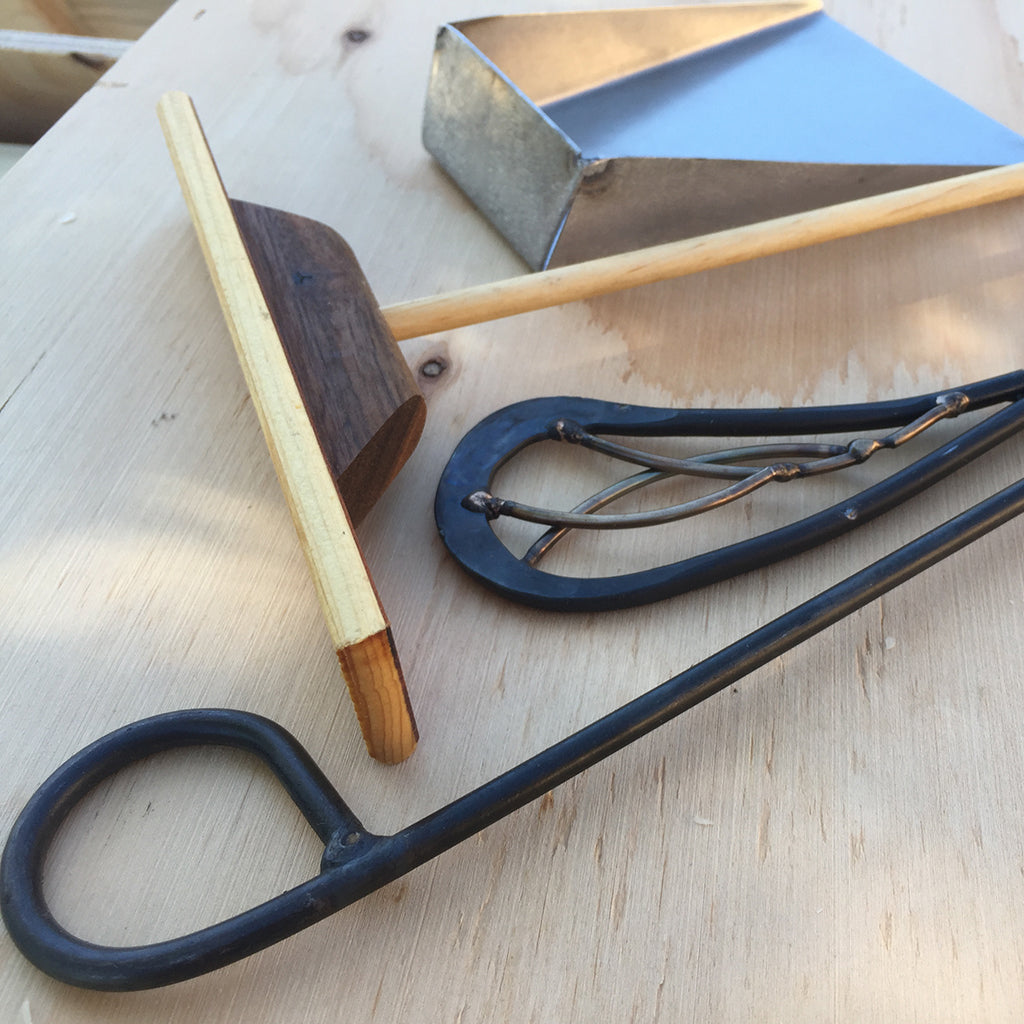
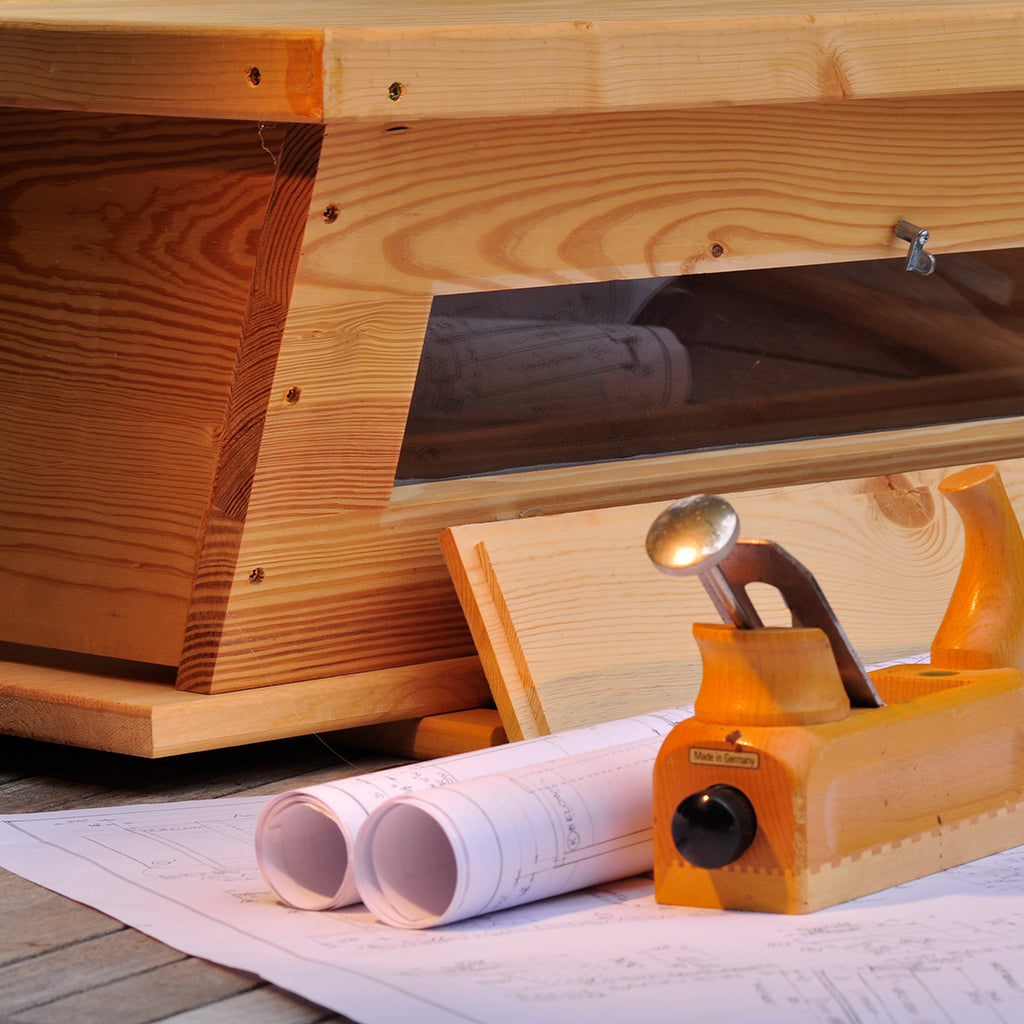

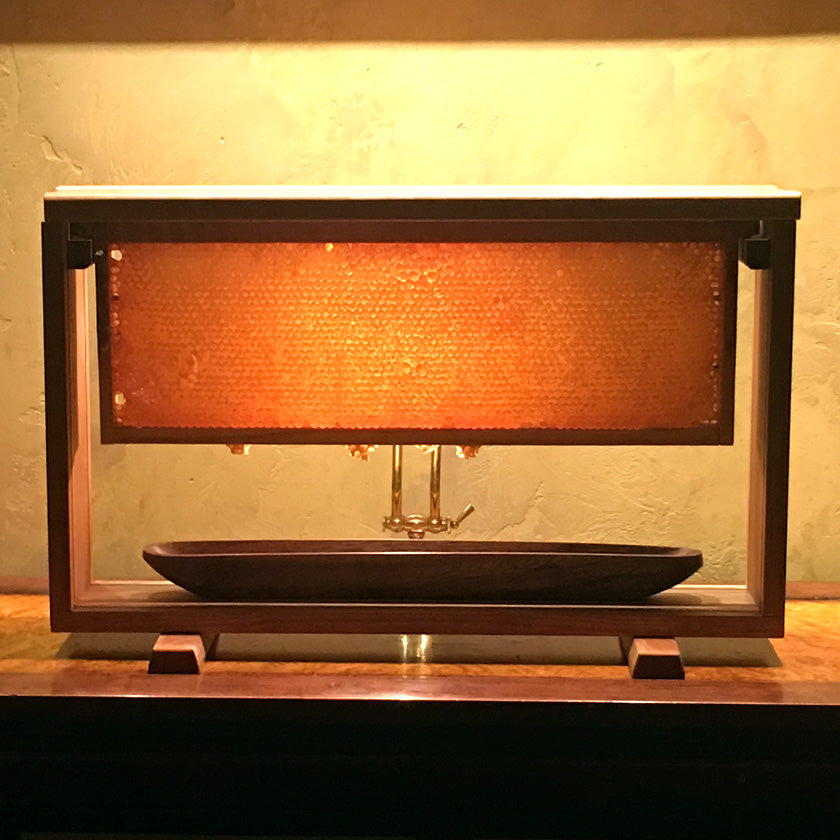
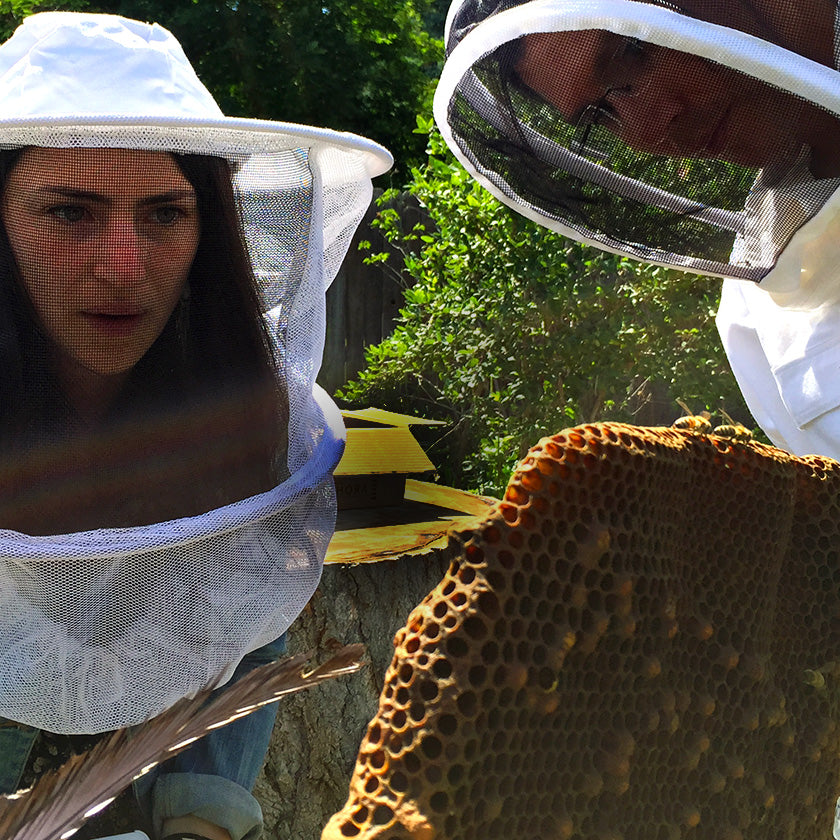
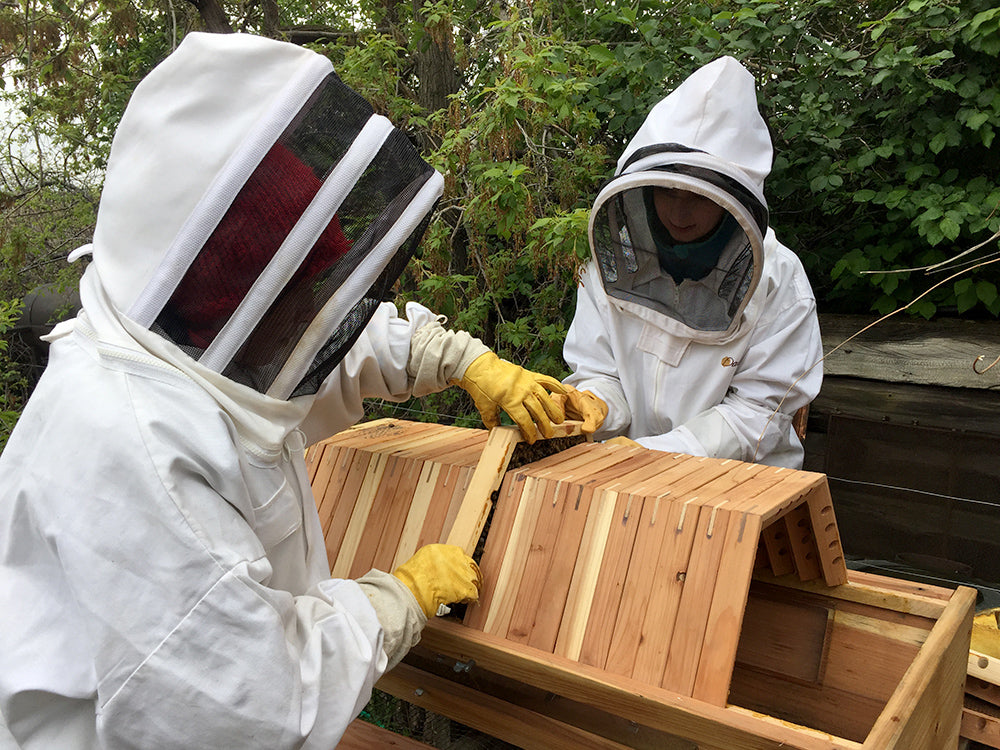
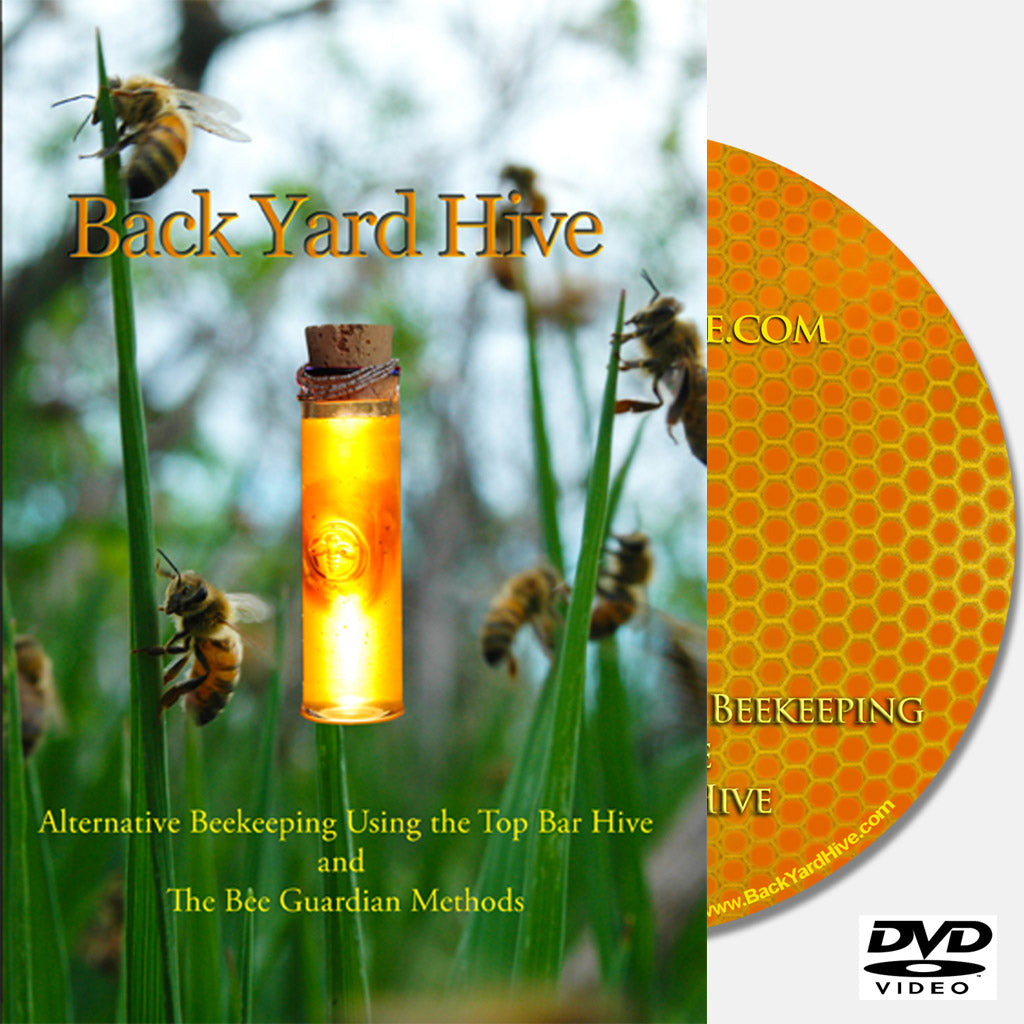


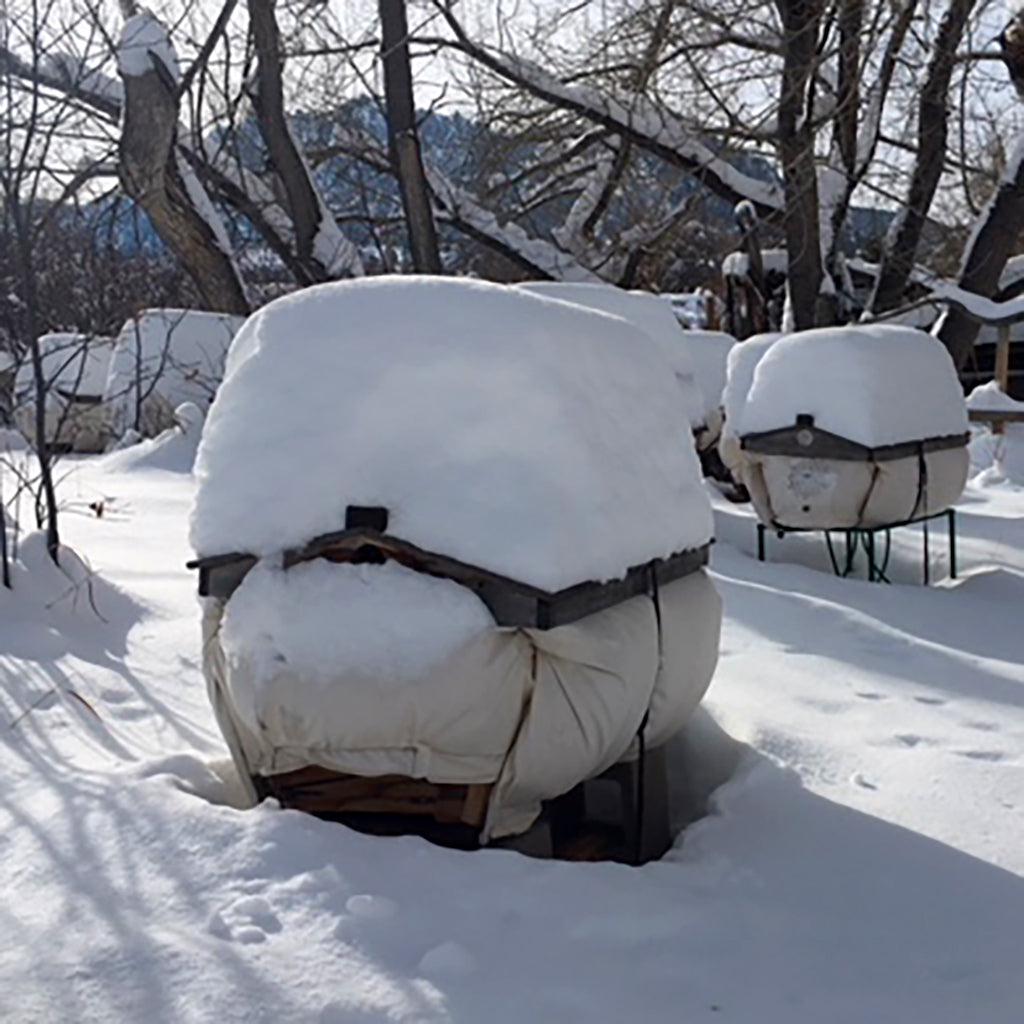
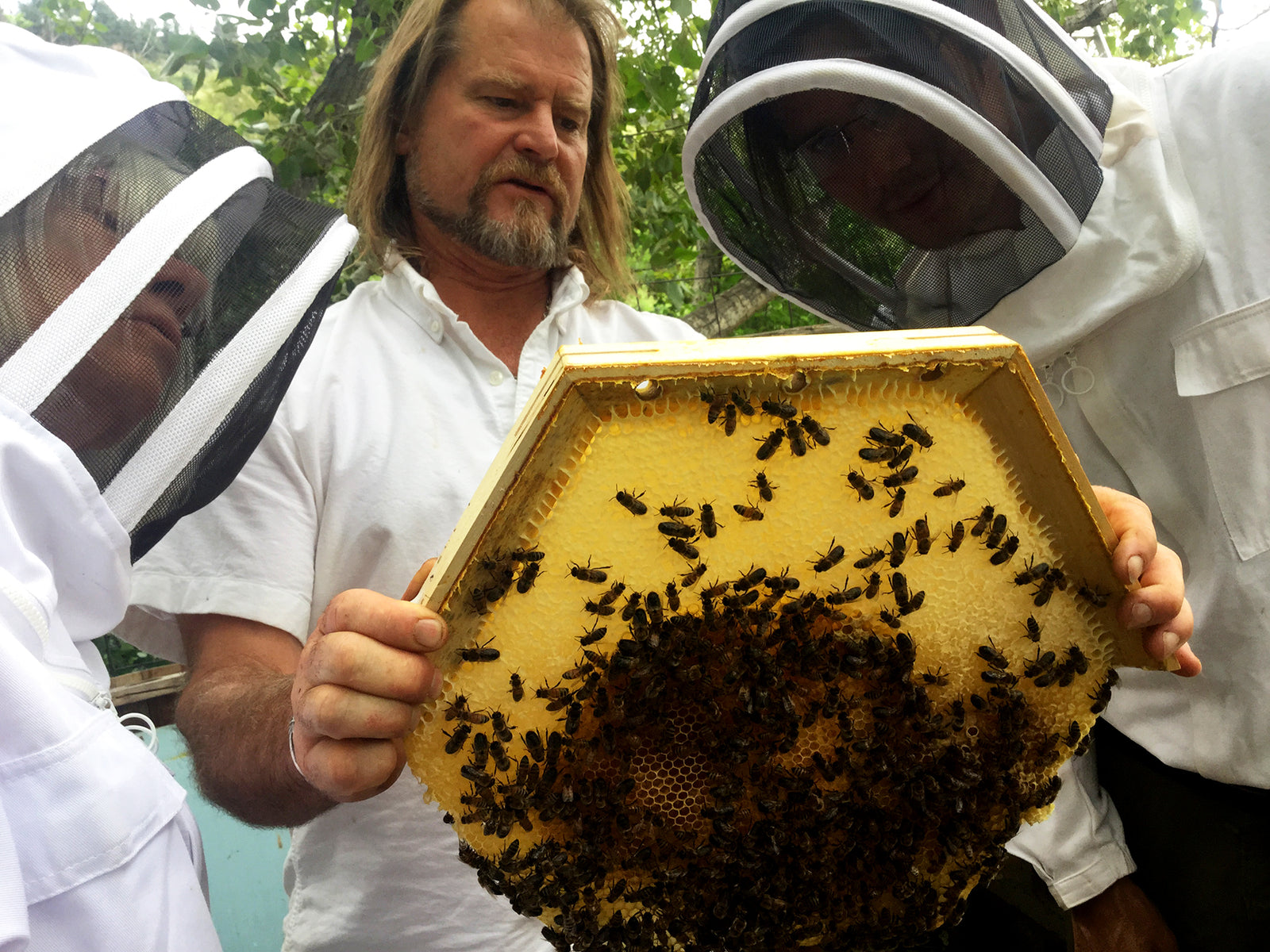


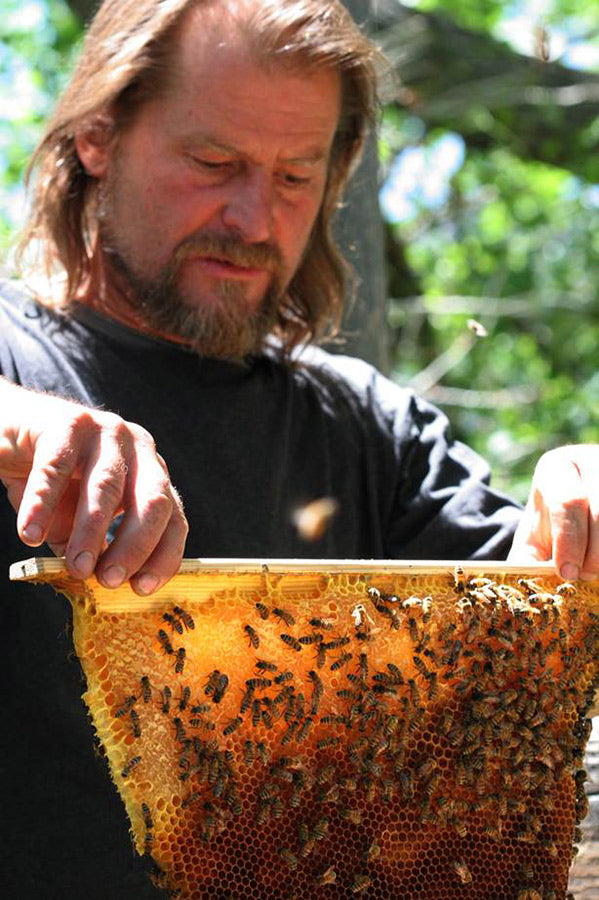


 Branches in front of a row of top bar bee hives that were relocated across the yard. The branches help the bees reorientate.
Branches in front of a row of top bar bee hives that were relocated across the yard. The branches help the bees reorientate.